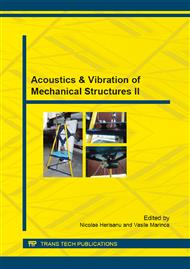p.249
p.257
p.262
p.267
p.273
p.278
p.284
p.290
p.295
Mapping the Mechanical Properties of Cancellous Bone from the Femoral Head
Abstract:
This work presents an experimental program to determine the mechanical properties of cancellous bone in the femoral head as a function of location. To achieve this several specimens of cancellous bone of approximately 10 mm height and 10 mm diameter were obtained from one human femoral head, starting the sampling from its main loading compressive direction. All specimens underwent compression testing in order to determine the mechanical properties of each specimen and thus a properties map of the cancellous bone in the femoral head was obtained. Based on the results a parametric file with material properties was created in order to be used by professionals in finite element analysis programs.
Info:
Periodical:
Pages:
273-277
Citation:
Online since:
October 2015
Price:
Сopyright:
© 2015 Trans Tech Publications Ltd. All Rights Reserved
Share:
Citation:


